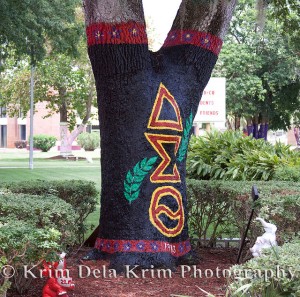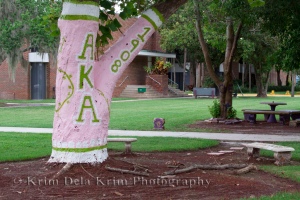 ?
? 
Every week, billions of people all around the world attend religious ceremonies in their respective buildings. Muslims go to their mosques, Christians go to their churches, Jews to their synagogues, Hindus to their Mandirs, and so on and so on.
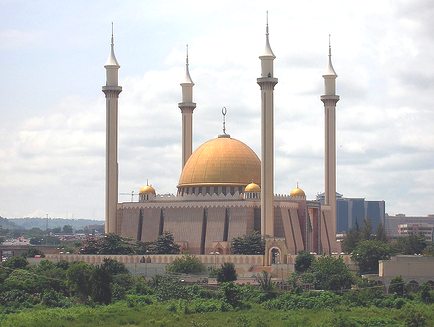
National Mosque of Nigeria
Believers of these different faiths gather for prayer and worship, fellowship with fellow believers, and to get a chance to hear text that they consider to be the “Word of God”. These sites are considered to be sacred places. They often are seen as the literal house of the God or gods which they are dedicated to.

Hindu temple in Delhi
Within these structures, elaborate murals, shrines, scultpures are put up to represent different gods, angels, and saints. Followers of these faiths will often go to these places to speak to these representations in hopes of getting them to intercede in their lives.

Statue of St. Peter
Within these “Houses of God”, people will hear stories about the divine revelations and experiences of their prophets, saints, and holy men and women. But the most ironic thing about these stories is that most of the people described in them did not have their spiritual awakenings, revelations or experiences in a temple or building of any kind. In fact, most of them had their spiritual experiences in nature. Don’t believe me? Consider the following examples:
Moses
Considered to be the most important prophet in Judaism, Moses had his first experience when he heard a voice speaking to him through a bush that was on fire, yet was not burning. His second divine revelation from God came to him on a mountaintop.

Moses receives the Ten Commandments on Mount Sinai
Gautama Buddha

Buddha under Bodhi tree
After trying different paths to find an end to human suffering, Siddhārtha Gautama decided to meditate under a Bodhi tree. After 49 days of non stop meditation, he reached Enlightenment, and became a Buddha, which means an “Awakened One.” Those that follow his teachings today call themselves Buddhists.
Jesus Christ
The man known as Jesus Christ is said to have begun his ministry when the spirit of God descended upon him during a baptism ritual performed by John the Baptist at the river Jordan. He then spent the next forty days and forty nights fasting and praying, not in a temple, not in a synagogue, but in the wilderness.

Jesus in the wilderness
According to the scriptures, he remained in the wilderness throughout his ministry, and did the vast majority of his preaching in nature, including the famous sermon on the mount.

Sermon on the Mount
Prophet Muhammad
“When Prophet Muhammad [pbuh] was nearly forty, he had been wont to pass long hours in retirement meditating and speculating over all aspects of creation around him. This meditative temperament helped to widen the mental gap between him and his compatriots. He used to provide himself with Sawiq (barley porridge) and water and then directly head for the hills and ravines in the neighbourhood of Makkah. One of these in particular was his favourite resort — a cave named Hira’, in the Mount An-Nour. It was only two miles from Makkah, a small cave 4 yards long and 1.75 yard wide. He would always go there and invite wayfarers to share him his modest provision. He used to devote most of his time, and Ramadan in particular, to worship and meditation on the universe around him.” [Rahmat Al-lil'alameen 1/47; Ibn Hisham 1/235,236; Fi Zilal Al-Qur'an 29/166]
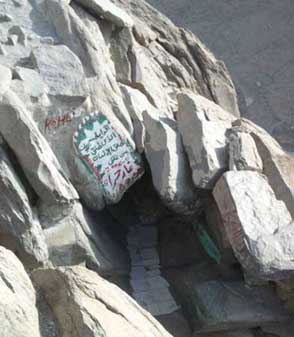
Cave in Hira where the Prophet Muhammad received the Koran
“When he was forty, the age of complete perfection at which Prophets were always ordered to disclose their Message, signs of his Prophethood started to appear and twinkle on the horizons of life; they were the true visions he used to experience for six months. The period of Prophethood was 23 years; so the period of these six months of true visions constituted an integral part of the forty-six parts of Prophethood. In Ramadan, in his third year of solitude in the cave of Hira’, Allâh’s Will desired His mercy to flow on earth and Muhammad [pbuh] was honoured with Prophethood, and the light of Revelation burst upon him with some verses of the Noble Qur’ân.” [Fath Al-Bari 1/27]
So here you have the founders of four of the major religions in the world receiving divine revelation in nature, and yet today, their followers are literally stick themselves inside in large boxes of sticks, stones, glass and metal. Does anyone else see something wrong with this picture?
Its not only religious people that have become delusional, its also people who proclaim to be scientists as well. Ancient scientists used to learn about nature by actually being a part of it. Sitting around watching the heavenly bodies in the sky, and seeing how different things interacted in nature. Nowadays, they are stuck behind computer screens or locked away in laboratories. The interesting thing is that most of their “theories” and “laws” stem from people like Sir Issac Newton, who “discovered” gravity after an apple fell on his head while he was sitting under a tree. I guess you can call him the Buddha of Physics.

Ndi Igbo (Igbo people), much like other African peoples, did not limit God to a physical structure or even one piece of land. They recognized the Divine in all of nature. I recall hearing a story about how when some of the European missionaries came to Alaigbo (Igboland), they had requested some land to build “God’s house”, to the amusement of the Igbo elders that they had spoken to. These same Europeans who claimed that their God was omnipresent truly did not believe it, for if they had, they would not have condemned the Igbo traditions which truly placed God in everything.
Contrary to popular belief, Igbos DID NOT worship or pray to “idols” or wooden sculptures. The idea of Africans worshiping or praying to an object that they created is downright insulting. The ironic thing is that the people who perpetuate this myth spend a good amount of time doing the same thing that they have historically condemned others for:

Offerings to a Statue of Mother Mary
Instead of worship, Igbos entered into communion with Spirit. Divine experiences were not limited to special prophets or holy men or saints, but could be had by everyone. The vast majority of places for public communion in traditional Igbo Omenala (custom and tradition) were either at trees or groves of trees. These trees were representations of divine forces, but were not the divine forces themselves. The following are some examples:
Both examples taken from Ngü Arö Öka The Öka Lunar Calendar, 2010 -2021 by Nevbechi Emma Anizoba.
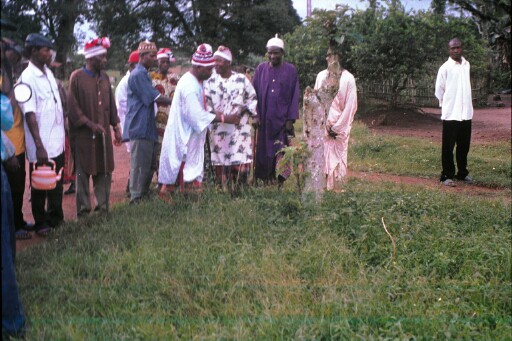
The pouring of libation at the shrine of Onye ama-ama in Amaeke
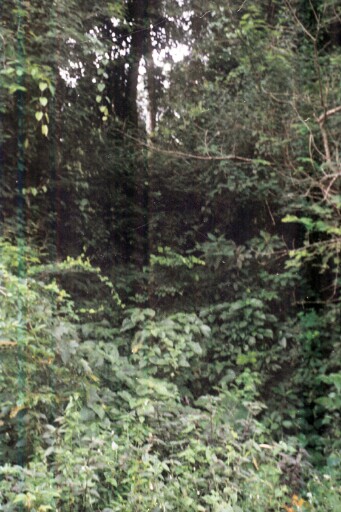
Sacred Grove of Ihu Nne Chukwu at Obiene
The use of trees as connections to the spirit world is illustrated beautifully in the “Tree of Souls” in the film, Avatar, where the Na’vi would go there in order to commune with the spirit of their planet, Eywa.

Tree of Souls in Avatar
This use of trees as places of communion with Spirit carried onto the Diaspora. Ayiti (Haiti) was one place where alot of Igbos ended up during the Maafa (African Hellacaust). Here we see a picture of Haitian Vodouisants (Practioners of Voodoo) having a ceremony at a sacred Mapou tree:

Voodoo Ritual at Mapou Tree
Two hundred years ago, their ancestors gathered together in a sacred grove in the Bwa Kayiman woods and declared that they would no longer be enslaved by the white people or their god.
Even in North America, the significance of trees as sacred communal places has not dissappeared from the lives of Africans in America. Below are some pictures of the special trees of some of the black fraternities and sororities:
What’s significant about the black fraternities and sororities in America is that they also trace part of their lineage to the Ekpe society of southeastern Nigeria, but that is a conversation for another day.
Besides trees, caves also were used as sacred places. Two of the great oracles of Alaigbo (Igboland) were found in caves, including the Ibini Ukpabi oracle of Arochukwu (also known as the Long Juju) as well as the Agbala oracle of Awka. Below is a picture of a shrine in the Ibini Ukpabi cave:
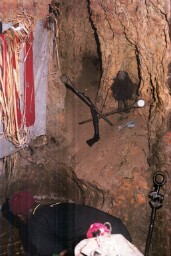
Ibini Ukpabi Oracle
Of all, the most famous public places of African communion with Spirit have always been bodies of water. Rivers, lakes and streams have always been viewed as extremely sacred all over the continent, as evident by the number and popularity of water divinities (Yemaya, Oshun, Auset, Het-Heru, Nommo, Mami Wata, etc).
Those who visited these sacred waters would go for spiritual cleansing, purification, and healing, to become one with Spirit, for initiations and for a variety of other reasons. Water is perhaps the easiest medium to go into a state of trance , in order to connect with Spirit as well as ancestors. If you want to learn how to connect with Ezenwanyi, the Divine Igbo mother water goddess, click here. Below is a picture of a Voodoo bathing ritual in Haiti:

Voodoo Bathing Ritual
I hope you have enjoyed all this information that has been presented to you. If you want to get a deeper understanding of the concepts mentioned above, the most effective way for you to do that would be to simply go outside. Whether you go a park, or a stream or even your backyard, you will gain a far deeper insight into what God is from simply getting back to Nature and being still then you would from reading any book or blog. Yagazie (May we prosper).
src::here::








